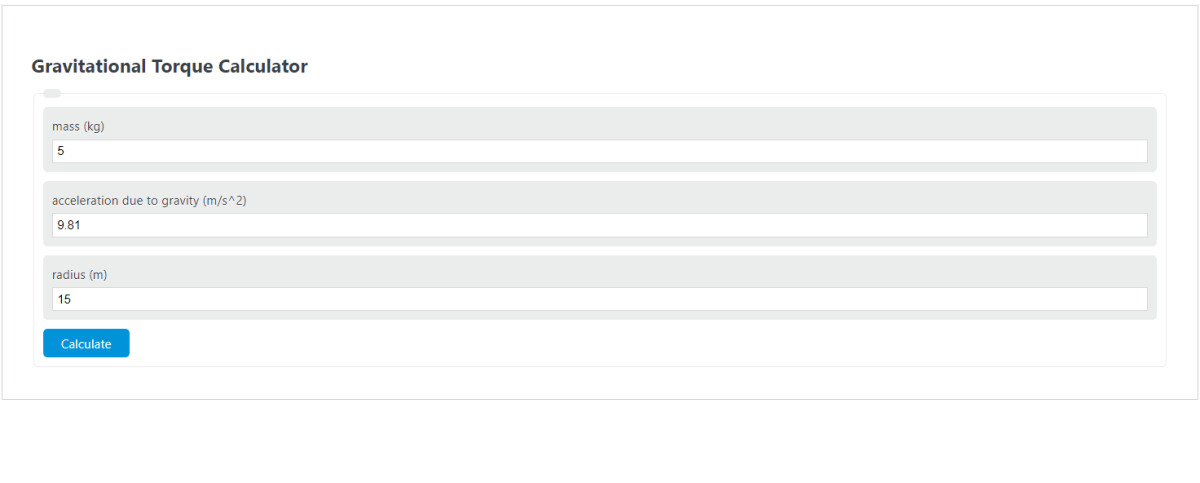Enter the mass (kg), the acceleration due to gravity (m/s^2), and the radius (m) into the calculator to determine the Gravitational Torque.
- All Torque Calculators
- Acceleration To Torque Calculator
- Pressure To Torque Calculator
- Work Done by Torque Calculator
Gravitational Torque Formula
The following formula is used to calculate the Gravitational Torque.
Tgravity = m*g*r
- Where Tgravity is the Gravitational Torque (N-m)
- m is the mass (kg)
- g is the acceleration due to gravity (m/s^2)
- r is the radius (m)
To calculate the gravitational torque, multiply the mass, acceleration due to gravity, and radius.
How to Calculate Gravitational Torque?
The following example problems outline how to calculate the Gravitational Torque.
Example Problem #1
- First, determine the mass (kg). In this example, the mass (kg) is given as 13 .
- Next, determine the acceleration due to gravity (m/s^2). For this problem, the acceleration due to gravity (m/s^2) is given as 9.81 .
- Next, determine the radius (m). In this case, the radius (m) is found to be 90.
- Finally, calculate the Gravitational Torque using the formula above:
Tgravity = m*g*r
Inserting the values from above and solving yields:
Tgravity = 13*9.81*90 = 11477.7 (N-m)
FAQ
What is the significance of Gravitational Torque in physics?
Gravitational Torque plays a crucial role in understanding how forces act on objects at a distance from a pivot point, particularly in rotational dynamics. It helps in analyzing the rotational effect of gravity on objects, which is essential in fields like mechanical engineering, astrophysics, and robotics.
How does the radius affect the Gravitational Torque?
The radius directly influences the Gravitational Torque; as the distance (radius) from the pivot point to the point where the force is applied increases, the torque increases proportionally. This is because torque is the product of the force applied and the distance from the pivot point, making the radius a critical factor in determining the rotational force.
Can Gravitational Torque be negative?
Yes, Gravitational Torque can be negative depending on the direction of the force relative to the rotation it causes. If the force tends to produce clockwise rotation, the torque is considered positive, while a force that tends to produce counterclockwise rotation is considered negative. The sign convention can vary depending on the context and the coordinate system used.
